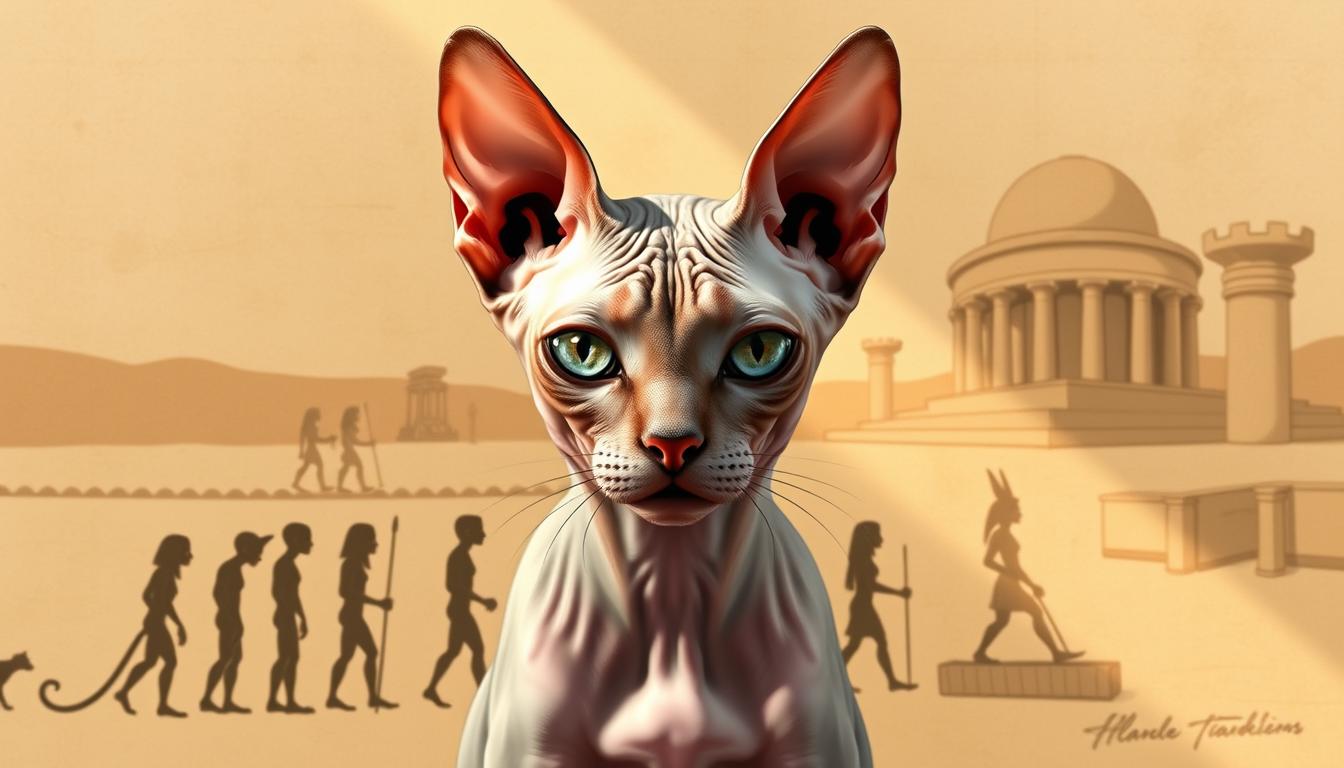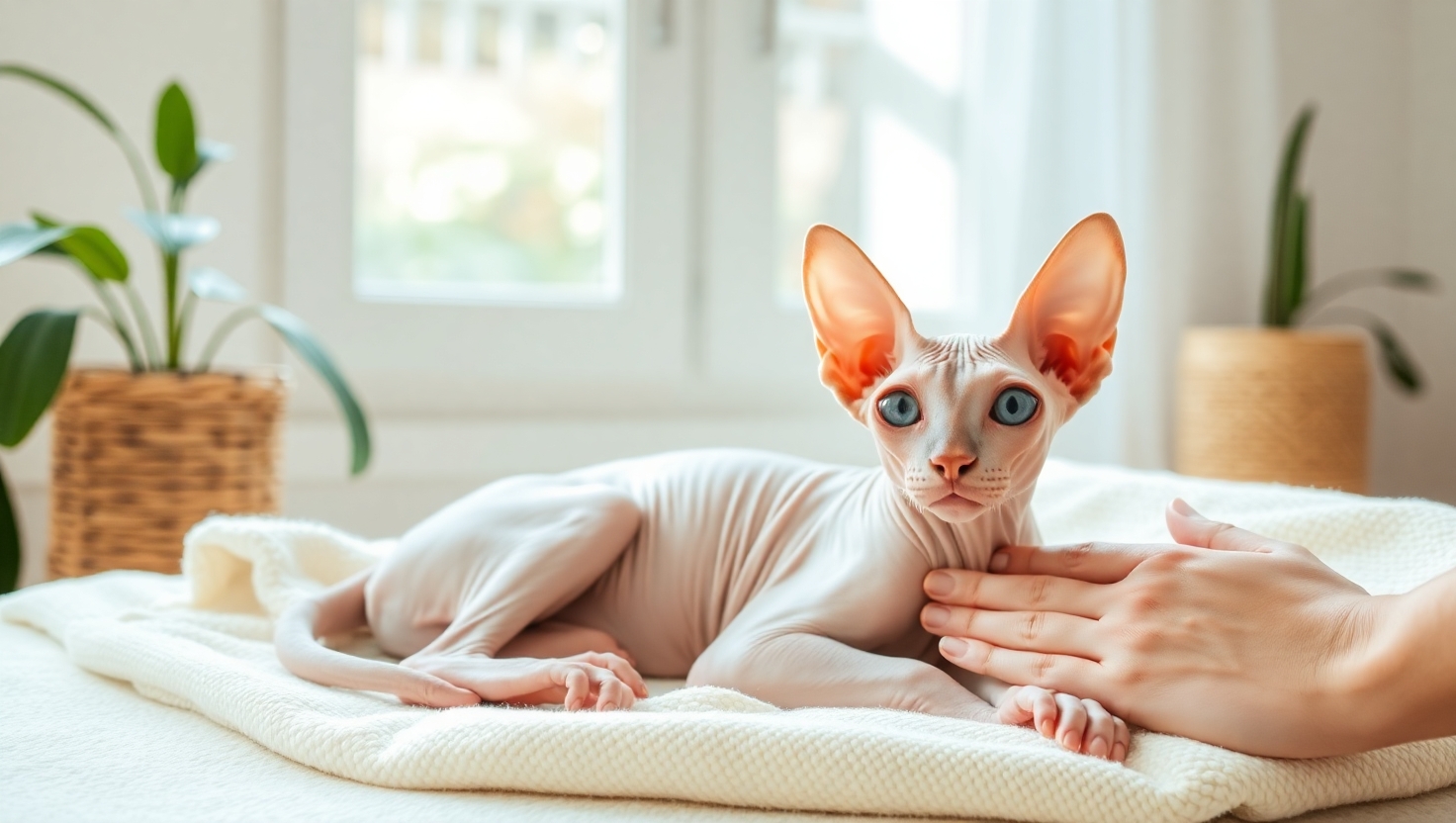Welcome to the intriguing universe of hairless companions! These unique pets first emerged in the 1960s through natural genetic variation, creating a breed that’s equal parts charming and high-maintenance. Unlike traditional furry friends, they demand specialized attention to thrive—a fact adored by celebrity owners like Demi Lovato and Kat Von D.

Owning one of these social creatures means embracing their need for warmth and connection. Their hairless bodies require temperature regulation and frequent skincare to stay healthy. Regular bathing becomes essential to manage natural oils that other breeds absorb through fur.
Nutrition plays a vital role in their well-being. High-quality diets fuel their fast metabolisms, while proper hydration supports sensitive skin. Owners must also monitor ear cleanliness and nail care closely due to their distinct physiology.
Beyond physical needs, these affectionate pets crave constant companionship. They’ll follow you from room to room, thriving on interaction. While rewarding, this level of commitment requires dedicated time and resources—ideal for those ready to prioritize their pet’s unique lifestyle.
Key Takeaways
- Originated in the 1960s through genetic mutation
- Need more maintenance than furry breeds
- Require weekly skincare and grooming routines
- Depend on regulated indoor temperatures
- Thrive with interactive, attentive owners
Introduction to the Sphynx Cat Breed
The story of these unique felines begins with a surprising twist of nature. A spontaneous genetic mutation in 1960s Canada set the stage for one of the most recognizable breeds in modern times.

Origins and Genetic Mutation
In 1966, Ontario witnessed the birth of Prune – the first documented hairless kitten. This natural variation occurred without human intervention, creating a foundation for selective breeding. Two key lineages emerged later:
| Lineage | Location | Contribution |
|---|---|---|
| Punky & Paloma | Toronto, Canada | Established early breeding standards |
| Dermis & Epidermis | Minnesota, USA | Strengthened genetic diversity |
Despite their Egyptian-inspired name, these cats have no historical ties to Africa. Breeders chose “Sphynx” due to their resemblance to the ancient statue’s sleek form.
Distinctive Personality and Social Nature
These hairless companions redefine typical feline behavior. They crave constant interaction, often shadowing owners like devoted puppies. Dr. Ariana Verrilli notes: “Mine sprint to the door when I arrive and insist on bedtime snuggles.”
Their communication style stands out too. Expect loud trills and persistent chirps when they want playtime or snacks. This vocal nature pairs with remarkable intelligence – many learn to open doors or retrieve toys.
Sphynx Cat Care: Daily Health and Home Routine
Maintaining a hairless companion’s well-being transforms routine tasks into acts of love. These unique pets need tailored strategies to stay healthy in a world designed for fur-covered animals.

Understanding Your Pet’s Unique Needs
Their exposed skin demands more than casual attention. Daily wipe-downs remove oil buildup, while weekly baths prevent clogged pores. Unlike furry breeds, they can’t self-regulate body temperature—keep your home between 70-80°F year-round.
Create cozy retreats with heated beds or fleece-lined perches. Veterinary dermatologist Dr. Lila Torres advises: “Check for rashes or dryness during cuddle sessions—early detection prevents bigger issues.” Pair this with monthly ear cleanings to avoid wax buildup.
| Maintenance Task | Hairless Pets | Furry Pets |
|---|---|---|
| Skin Care | Daily | Monthly |
| Temperature Checks | Hourly | Seasonal |
| Vet Visits | Bi-Annual | Annual |
Sun exposure becomes risky business. Install UV-blocking window film and limit outdoor time to shaded mornings. Their curious nature means securing cabinets and covering hot appliances becomes essential home safety steps.
Embrace this time-intensive journey with patience. The reward? A thriving companion whose velvety warmth and playful antics redefine pet ownership.
Grooming and Bathing Your Hairless Feline
Keeping your hairless companion clean becomes an art form requiring patience and the right tools. Their unique physiology demands specialized routines to manage natural oils that furry breeds handle automatically.

Effective Bathing Techniques and Frequency
Weekly baths are non-negotiable for maintaining healthy skin. Use lukewarm water and soap-free formulas like Earthbath Oatmeal & Aloe to avoid stripping essential moisture. Many owners find success with washcloth scrubbing—a less stressful alternative to full immersion.
Veterinary technician Mara Jensen suggests: “Work in sections, starting from the neck down. Reward with treats to create positive associations.” Always test water temperature on your wrist first, as sensitive skin burns easily.
Maintaining Clean Ears and Paws
Those signature large ears need bi-weekly attention. Apply a pea-sized drop of Virbac Epi-Otic cleaner, massaging gently before wiping with cotton pads. Check between toe beans daily—food particles and litter often hide there.
Post-bath care matters most. Pat dry with microfiber towels immediately, paying extra attention to skin folds. Never use human hair dryers—their intense heat can cause discomfort. For stubborn oils, cornstarch makes a safe dry shampoo between weekly washes.
Nutrition and Diet Considerations for Optimal Health
Fueling your hairless companion requires more than just filling their bowl—it demands strategic nutritional planning. What they eat directly impacts their signature velvety skin and energetic personality.
Selecting High-Quality Food
Premium meals act as the first defense against sticky skin buildup. Animal-based proteins like chicken or salmon help regulate oil production, while omega-rich formulas maintain skin elasticity. Avoid fillers like corn and wheat—these trigger excess sebum secretion.
“A low-quality diet shows immediately on their skin—clogged pores, wax-filled ears, and frequent vet visits become the norm,” warns veterinary nutritionist Dr. Emily Carson.
Feeding Schedules and Metabolic Needs
Their furnace-like metabolism demands frequent fueling. Offer four small meals daily instead of two large portions—this matches their natural energy expenditure. Free-feeding dry kibble works well since they rarely overeat.
| Nutrient | High-Quality Food | Low-Quality Food |
|---|---|---|
| Protein Source | Whole meats | Meal byproducts |
| Omega Fatty Acids | 3% minimum | Under 1% |
| Calorie Density | 450 kcal/cup | 300 kcal/cup |
| Preservatives | Vitamin E | BHA/BHT |
Always keep fresh water available—proper hydration helps flush toxins through their fast-working systems. Pair this approach with regular weigh-ins to adjust portions as needed.
Preventing and Managing Common Health Issues
Protecting your hairless companion’s well-being means staying ahead of breed-specific challenges. These unique pets face particular vulnerabilities that demand proactive strategies and specialized knowledge.

Screening for Cardiac and Dental Problems
Hypertrophic cardiomyopathy tops the list of concerns for these unique pets. This heart condition causes thickening of the cardiac muscle, potentially leading to serious complications. Annual echocardiograms become essential from kittenhood through their senior years.
Dental problems present another major battlefront. Many develop severe gum disease despite regular brushing. Veterinary dentist Dr. Marco Silva notes: “By age five, most need professional cleanings every six months—some require full extractions to prevent systemic infections.”
Regular Vet Visits and Preventative Care
Finding the right veterinary partner proves crucial. Seek professionals experienced with purebred health issues—their lack of fur alters symptom presentation for common ailments. Biannual checkups should include:
- Blood pressure monitoring
- Oral health assessments
- Skin condition evaluations
Establish an emergency fund for unexpected vet costs. While pricey, early intervention often prevents minor issues from becoming critical. Remember—their unique biology means standard feline health protocols might not apply.
Keeping Your Sphynx Comfortable: Temperature and Clothing
Creating a cozy sanctuary for your hairless companion requires smart environmental adjustments. Their lack of fur makes temperature control a daily priority, turning your house into a climate-controlled haven.

Warm Bedding and Heating Solutions
Think beyond standard pet beds. Heated mats with adjustable settings offer consistent warmth, while fleece-lined caves retain body heat. Rotate microwavable pads between resting spots—they stay toasty for hours without electricity.
Position these warmth sources in favorite nap zones. Avoid drafty areas near windows or doors. As veterinary technician Lisa Monroe advises: “Check paw pads regularly—if they feel cool, boost the ambient temperature.”
Sun Protection and Appropriate Apparel
Outdoor adventures pose hidden dangers. Their delicate skin burns in minutes—keep outdoor time to zero during peak sunlight. For necessary vet trips, try breathable cotton shirts with UV protection.
When choosing clothes, prioritize:
- Stretch-knit fabrics for easy movement
- Snug collars without tight elastic
- Machine-washable materials
Never use human sunscreen—zinc oxide is toxic if licked. Instead, consult your vet about pet-safe balms for rare outdoor exposures. Remember: a happy hairless companion thrives in a carefully curated indoor world.
Enhancing Your Bond Through Play and Social Interaction
Building a strong connection with your hairless companion goes beyond basic care—it’s about creating shared moments of joy. These affectionate pets thrive on engagement, often displaying dog-like enthusiasm during interactions. Their need for companionship shapes every aspect of daily life together.
Interactive Play Ideas for Hairless Cats
Turn playtime into brain games with puzzle feeders or feather wands. Many enjoy retrieving small toys—one owner’s feline fetches crinkle balls 15 times consecutively. Rotate activities weekly to satisfy their curious minds.
Understanding Their Need for Attention
These social creatures demand constant companionship. Leaving them alone frequently? Consider adopting a pair—they’ll keep each other entertained while you’re away. Their signature door-greeting ritual proves how deeply they bond with their people.
Embrace the laughter they bring through goofy antics and midnight zoomies. With proper engagement, you’ll nurture a friendship that grows stronger over the years. Remember: their velvet paws leave permanent prints on hearts, not just furniture.
FAQ’s
How often should I bathe my hairless feline?
Weekly baths with a gentle, hypoallergenic shampoo help remove excess oils and prevent skin buildup. Always dry them thoroughly to avoid chills.
Do these pets require special dietary plans?
Yes! Their high metabolism benefits from protein-rich kibble or wet food. Brands like Royal Canin or Hill’s Science Diet offer formulas tailored for sensitive systems.
Are they prone to specific health concerns?
Regular screenings for hypertrophic cardiomyopathy (a heart condition) and dental issues are crucial. Annual vet checkups help catch problems early.
Why does my pet need sweaters indoors?
Without fur, they lose body heat quickly. Soft cotton outfits or heated beds from brands like K&H Pet Products keep them cozy in cooler environments.
How can I protect their skin from sun damage?
Limit direct sunlight exposure and apply pet-safe sunscreen. Outfits with UV protection also shield delicate skin during outdoor adventures.
Do they demand more social interaction than other breeds?
Absolutely! These extroverts thrive on attention—interactive toys like feather wands or puzzle feeders keep them mentally engaged and bonded to you.
What’s the best way to clean their ears?
Use a vet-approved cleanser weekly. Gently wipe the outer folds with cotton balls, avoiding deep insertion to prevent injury.
Also Read:


